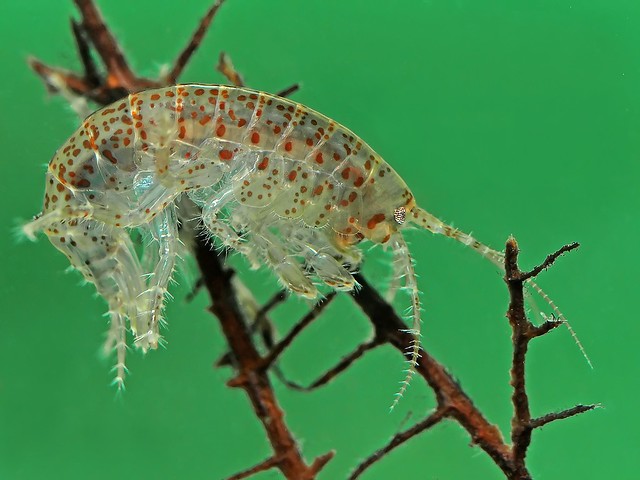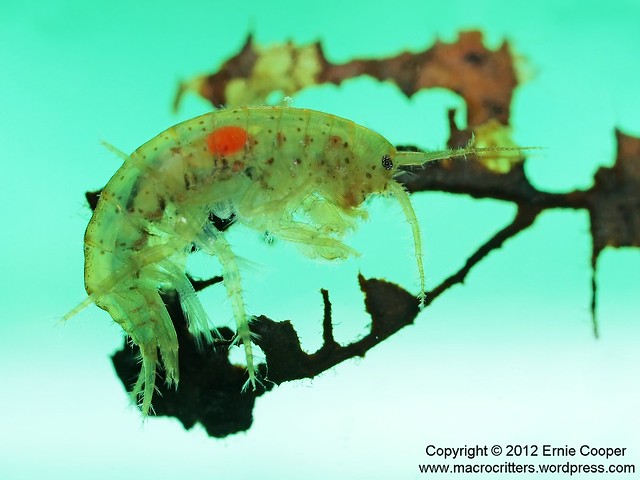Diptera.info :: Miscellaneous :: The Lounge
|
Macro photos of freshwater amphipods
|
|
| Ecooper |
Posted on 10-01-2013 22:01
|
|
Member Location: Posts: 45 Joined: 09.08.12 |
 amphipod tiff spotted edit colour_filtered unsharpen_filtered by ernie.cooper, on Flickr It has been waaaaay too long since I posted any photos. Funny how life can speed-up and suck all your time—especially over Christmas holidays when you have kids! Anyhow, I’m back and after a 2-week hiatus I have finally posted some photos on my blog of freshwater amphipods (that I took last summer). The photo above is of a very pretty specimen of Gammarus lacustris; apparently the only species of freshwater gammarid amphipod found in British Columbia. Whenever (and wherever) I have collected freshwater Gammarus in the past, they have been coloured drab shades of brown and olive green. But as you can see, the specimens I collected from this particular stream showed some real diversity in colouration, including some really pretty specimens with bright red spots on a translucent yellowish body. Others had a single very obvious bright red spot on their side. I still don’t know if the spot was on the critter’s exoskeleton or was something inside the body…  amphipod red spot sharpened copyright ernie cooper_filtered by ernie.cooper, on Flickr I really need to get back to that stream again this summer to collect more of these critters and do a better job of photographing them… Cheers, EC www.macrocritters.wordpress.com |
|
|
|
| Tony Irwin |
Posted on 11-01-2013 00:27
|
|
Member Location: Norwich, England Posts: 7327 Joined: 19.11.04 |
The red spot is the young stage of an acanthocephalan parasite (probably Polymorphus). It alters the shrimp's behaviour so that it is more likely to be eaten by a bird which is the primary host of the acanthocephalan.
Tony ---------- Tony Irwin |
|
|
|
| Ecooper |
Posted on 15-01-2013 01:21
|
|
Member Location: Posts: 45 Joined: 09.08.12 |
Tony Irwin wrote: The red spot is the young stage of an acanthocephalan parasite (probably Polymorphus). It alters the shrimp's behaviour so that it is more likely to be eaten by a bird which is the primary host of the acanthocephalan. Thank you very much for this! I’ve been reading-up on the topic and it is fascinating. Now I am especially keen to get back to that stream this fall and see if I can find more infected specimens. Hopefully I’ll be able to dissect out a specimen to have a look at (and maybe photograph) under the microscope. I’ll definitely need to lay off the coffee that day! Cheers, EC www.macrocritters.wordpress.com |
|
|
|
| Jump to Forum: |












